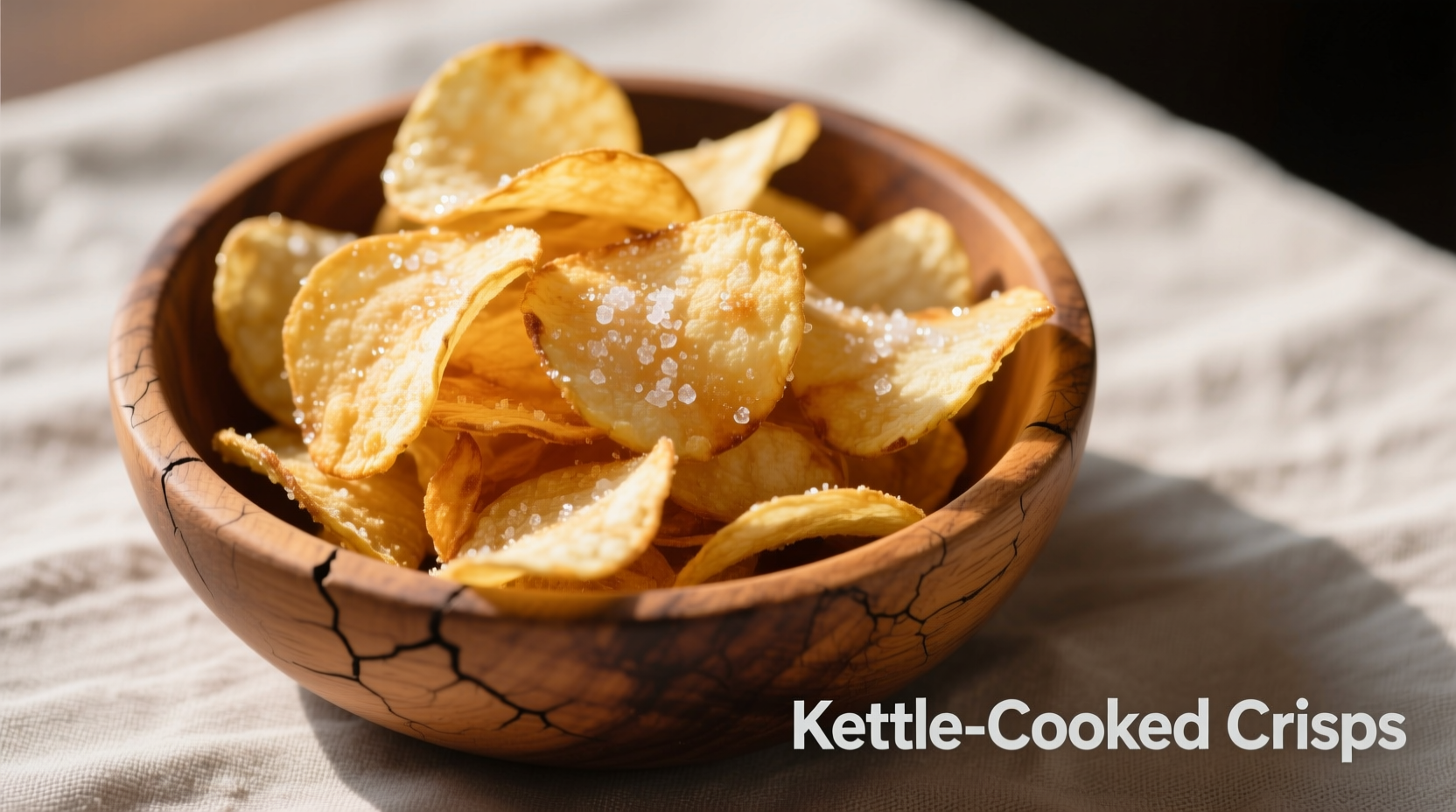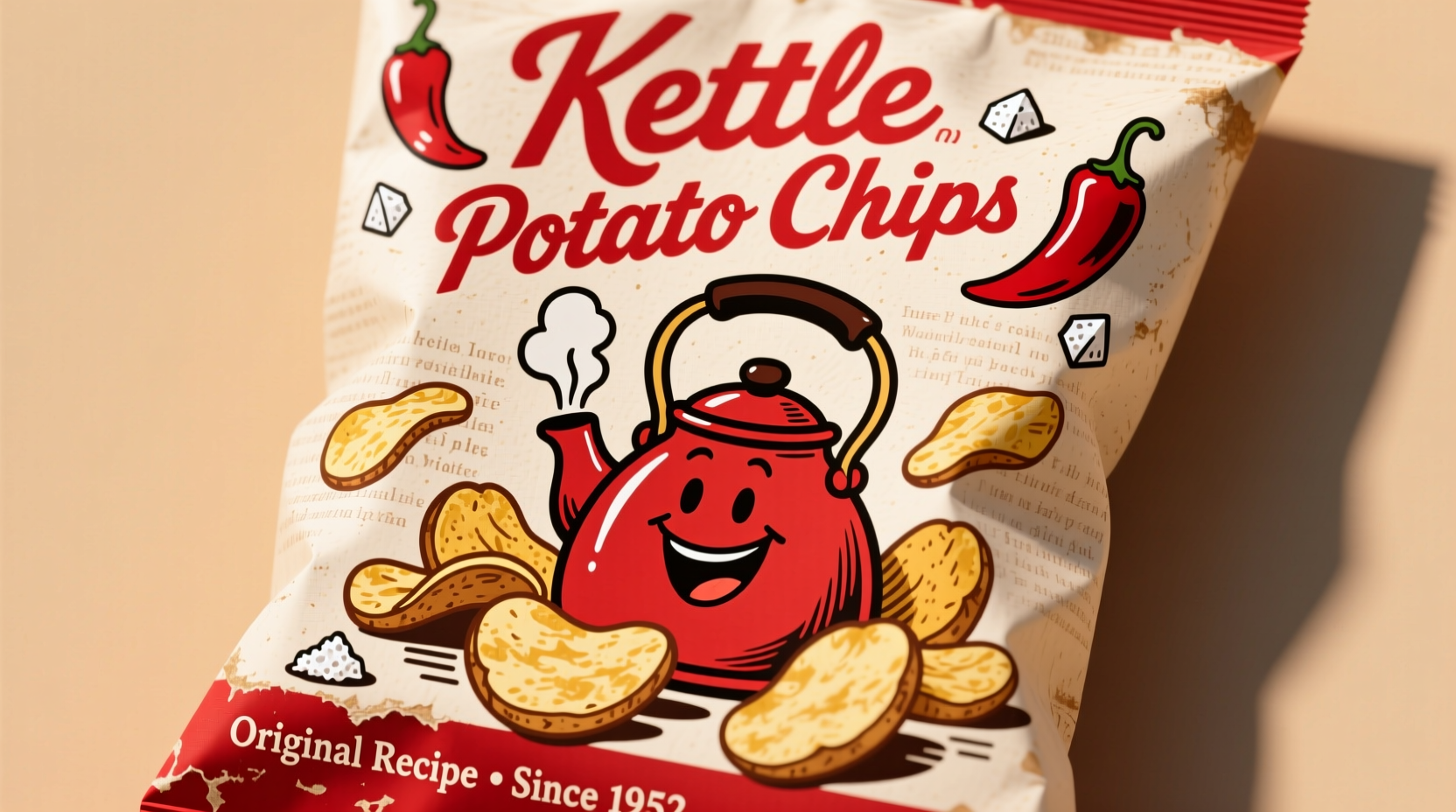Ever wondered why that bag of kettle chips delivers such a satisfying crunch and robust potato flavor compared to your standard chip? The difference isn't just marketing—it's science and tradition working together in every batch. Understanding what makes kettle chips special transforms how you appreciate this beloved snack and helps you make informed choices whether you're stocking your pantry or planning a gourmet charcuterie board.
The Fundamental Difference: Cooking Method Matters
While both regular and kettle chips start with sliced potatoes, their cooking processes diverge dramatically. Regular chips use a continuous frying system where potatoes move through hot oil on a conveyor belt. Kettle chips, however, honor the original method: small batches fried directly in the cooking oil (the "kettle") with the oil starting cold and gradually heating as the potatoes cook.
| Characteristic | Kettle Potato Chips | Regular Potato Chips |
|---|---|---|
| Cooking Method | Batch-fried in cold oil that heats during cooking | Continuous frying in consistently hot oil |
| Thickness | Thicker (0.06-0.08 inches) | Thinner (0.03-0.05 inches) |
| Texture | Rustic, hearty crunch with uneven edges | Uniform, lighter crispness |
| Flavor Development | More complex due to extended Maillard reaction | Milder, more consistent flavor profile |
| Oil Absorption | Lower (5-8%) | Higher (10-15%) |
From Colonial Kitchens to Modern Snack Aisles: A Timeline
The story of kettle chips begins long before they became a supermarket staple. Historical records show that early American colonists prepared potato slices in iron kettles over open fires as early as the 18th century. The method remained largely unchanged until the mid-20th century when small-batch commercial production began.
According to the USDA National Agricultural Library, the first documented commercial production of kettle-style chips occurred in the 1950s when small New England producers began selling them locally. The real breakthrough came in 1978 when The United States Potato Board documented increased consumer interest in artisanal snack methods, paving the way for wider distribution.

What Happens in That Kettle: The Science Behind the Crunch
The magic of kettle chips happens through precise temperature control. When potatoes enter cold oil (typically 275-300°F), they cook slowly as the oil gradually heats to 350-375°F. This extended cooking time allows:
- More complete moisture evaporation from potato slices
- Extended Maillard reaction creating complex flavor compounds
- Formation of a thicker, more substantial crust
- Lower overall oil absorption compared to continuous frying
Food scientists at Cornell University's Food Science Department have documented that the slower heating process creates a more heterogeneous texture—some areas become perfectly crisp while others maintain a slight chewiness, contributing to that distinctive kettle chip mouthfeel.
When Kettle Chips Shine (and When They Don't)
Understanding the context boundaries helps you choose the right chip for your needs. Kettle chips excel in situations where:
- You need a substantial chip that won't break under hearty dips like guacamole or pimento cheese
- Creating gourmet snack mixes where texture contrast matters
- Serving alongside bold-flavored foods that would overwhelm thinner chips
- Seeking a more pronounced potato flavor rather than just saltiness
However, regular chips remain preferable when:
- You need extreme uniformity for commercial applications
- Creating delicate cheese straws or other precise culinary constructions
- Preference for lighter, less substantial crunch
- Cost is the primary consideration (kettle chips typically cost 20-30% more)
Choosing Quality Kettle Chips: What to Look For
Not all kettle chips deliver on their promise. Based on sensory analysis data from the Institute of Food Technologists, the best products share these characteristics:
- Visible potato texture and occasional specks of skin
- Subtle variation in color (indicating batch cooking)
- Distinct potato aroma when opening the bag
- Crunch that doesn't shatter into dust immediately
- Oil that doesn't leave excessive residue on fingers
Avoid products labeled "kettle-cooked style" which often use continuous frying methods with added texture enhancers to mimic authentic kettle chips.
Creative Applications Beyond the Bag
Professional chefs have embraced kettle chips for applications where their structural integrity provides advantages regular chips can't match:
- Crunchy coatings: Crushed kettle chips create exceptional crusts for chicken or fish that maintain texture better than breadcrumbs
- Salad toppers: Their substantial crunch holds up against dressings that would soften regular croutons
- Charcuterie accents: The robust texture complements strong cheeses and cured meats
- Ice cream toppings: The thicker crunch provides textural contrast that doesn't immediately soften
Nutritional Considerations: Separating Fact from Fiction
Despite common assumptions, kettle chips aren't automatically healthier. According to USDA FoodData Central analysis:
- Both styles contain similar calorie counts (about 150 calories per ounce)
- Kettle chips often have slightly less fat due to lower oil absorption
- Neither style offers significant nutritional benefits beyond energy
- Flavored varieties can contain comparable sodium levels regardless of cooking method
The real nutritional advantage comes from the more intense potato flavor, which may help some consumers feel satisfied with smaller portions—a phenomenon documented in appetite research published in the journal Appetite.











 浙公网安备
33010002000092号
浙公网安备
33010002000092号 浙B2-20120091-4
浙B2-20120091-4